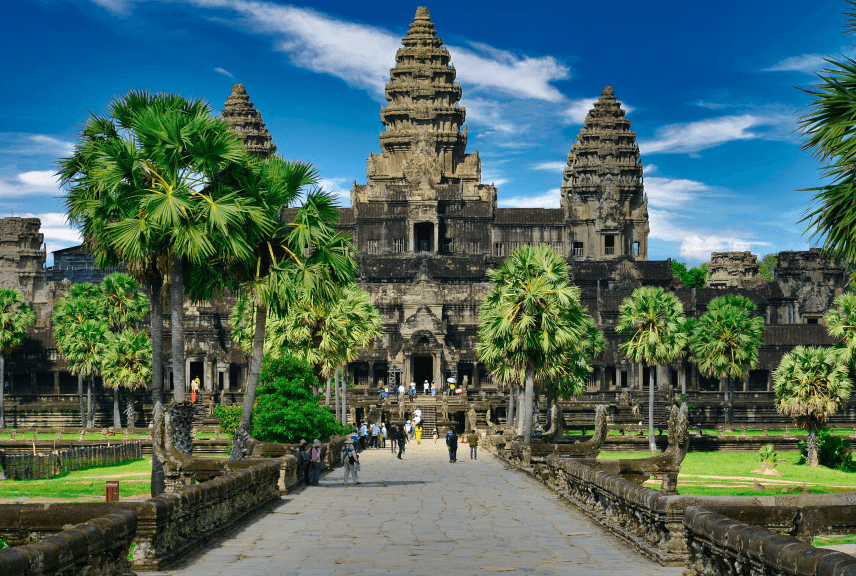Public Holidays:
I- Important Dates Affecting Touring, And Compulsory Meals
01 Jan – International New Year’s Day:
Banks and public offices will be closed, as will some businesses. Road traffic will likely be heavy in the evening in Ho Chi Minh City.
Last Day of Jan – Lunar New Year:
Banks and public offices will be closed, as will most businesses. Re-unification Palace will be closed on New Year’s Eve. Cao Dai Temples (including the temple in Tay Ninh) will be closed 6 days before the Lunar New Year. Floating Markets in the Mekong Delta will not operate. Factories will not operate.
30 Apr – Independence Day:
Public holiday. Banks and public offices will be closed, as will some businesses. Road traffic is likely to be heavy in the evening in Ho Chi Minh City.
01 May – Labor Day:
Banks and public offices will be closed, as will some businesses. Road traffic is likely to be heavy in the evening in Ho Chi Minh City.
02 Sep – National Day:
Banks and public offices will be closed, as will some businesses. Road traffic is likely to be heavy in the evening in Ho Chi Minh City.
24 Dec – Christmas Eve:
Not a public holiday.
Compulsory dinner charge levied by all Hotels & Reosrts 4 & 5 star at USD 40.00/pax.
31 Dec – International New Year’s Eve:
Not a public holiday. Road traffic will likely be heavy in the evening in Ho Chi Minh City.
Compulsory dinner charge levied by all Hotels & Reosorts 4 & 5 star at USD 50.00/pax.
II- Vietnam Shopping
Vietnam has some fantastic shopping opportunities so it is well worth setting aside half a day or more to properly peruse. Hotspots include Hanoi, Hoi An and Ho Chi Minh City, each of which has a tempting selection of everything from avant-garde art to sumptuous silk suits. Some of the best buys on the block include gorgeous glazed pottery, classic lanterns, ‘almost’ antiques, embroidered tablecloths, fine furnishings, and lavish silk and linen creations in designer boutiques.
Bargaining
Some bargaining is essential in most tourist transactions. Remember that in Asia ‘saving face’ is important, so bargaining should be good-natured. Smile and don’t get angry or argue. In some cases you will be able to get a 50% discount or more, at other times this may only be 10%. And once the money is accepted. the deal is done. Don’t waste time getting stressed if you find out someone else got it for less, it is about paying the price that is right for you, not always the ‘right’ price.
Do the follow :
* Bargaining to get to get a 50% discount with street shops
* Bargaining to get to get a 20% discount with paiting shops
* Bargaining to get to get a 40% discount with clothes shops
* Bargaining to get to get a 36% discount with other items
Art & Antiques
There are several good shops to hunt for art and antiques, but Vietnam has strict regulations on the export of real antiques, so be sure the items are allowed out of the country. Most reputable shops can provide the necessary paperwork. Both traditional and modern paintings are a popular item. Cheaper mass-produced stuff is touted in souvenir shops and by street vendors. More sophisticated works are displayed in art galleries, with paintings from US$50 to US$5000, but some of the hottest Vietnamese artiste now fetch up to 10 times that. It’s important to know that there are forgeries around – just because you spot a painting by a ‘famous Vietnamese artist’ does not mean that it’s an original. A Vietnamese speciality is the ‘instant antique’, such as a teapot or ceramic dinner plate, with a price tag of around US$10. Of course, it’s OK to buy fake antiques as long as you aren’t paying genuine prices.
Clothing
Forget the rubber sandals and pith helmets, Vietnam is emerging as a regional design centre and there are some extravagant creations in the boutiques of Hanoi and Ho Chi Minh. Beautiful silk dresses cost a fraction of what they would at home, and men can get in on the action with some flamboyant shirts or sharp suits. Ao dai (ow-zai in the north, ow-yai in the south) is the national dress for Vietnamese women and is a popular item to take home. Ready-made ao dai cost from US$ 20 to US$30, but custom numbers can cost a lot more but may be required due to sizing differentiation. There are ao dai tailors nationwide, but those in the tourist centres are more familiar with foreigners. These days more and more hill-tribe gear is winding its way to shops in Hanoi and HCMC. It is brightly patterned stuff, but you may need to set the dyes yourself (try to soak the clothes in some salty water overnight) so those colours don’t bleed all over the rest of your clothes. Alternatively, put it in a plastic bag and wait until you get home. Women all over the country wear conical hats to keep the sun off their faces, though they also function as umbrellas in the rain. The best-quality conical hats are produced in the Hue area. T-shirts are ever popular items with travellers. A printed shirt starts from US$ 4 while an embroidered design will cost about US$ 6.
Handicrafts
Hot items on the tourist market include lac-querware, boxes and wooden screens with mother-of-pearl inlay, colourful embroidery, silk greeting cards, wood-block prints, oil paintings, watercolours, blinds made of hanging bamboo beads, reed mats. carpets, jewellery and leatherwork.
War Souvenirs
In places frequented by tourists, it’s easy to buy what looks like equipment left over from the American War. However, almost all of these items are reproductions and your chances of finding anything original are slim. The fake Zippo lighters engraved with platoon philosophy are still one of the hottest-selling items. You can pay extra to get one that’s been beat up to look like a war relic, or just buy a brand-new shiny one for less 








